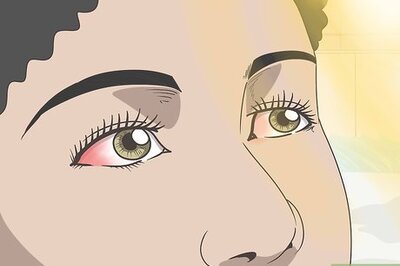
views
BANGALORE: The omnipresence of ‘glass panelled’ buildings whether in the silicon city of Bangalore or the National Capital Region of Delhi, only embellishes the landscape of many metros in the country. Gleaming and attractive to look at, but an eyesore in reality, such glass facades have resulted in the creation of artificial heat islands as well as a visible rise in temperatures in isolated pockets of the city.The last fifteen years, many malls, shopping complexes, industrial houses and companies especially the IT industry has adopted this design of putting up huge glass panels or fronts for their massive buildings. This was used in the European countries and the US to suit the temperate climate while in a tropical country like India, the so-called architectural marvels are totally unsuitable for the hot and dusty environs, that not only reflects light but also traps heat within the buildings. “Nowadays, an entire wall of a building is being replaced by these costly, highly energy intensive material like glass without realising its deleterious effect on man or his environment,” says Dr M R Yogananda, Structural Engineer, alternative technologies.“The city of Bangalore is witnessing the formation of isolated heat islands in areas like the Central Business District, ITPL in Whitefield, Bannerghata Road as well as Residency Road in its zeal to imitate the Western model of building glass facade structures,” says Prof B Vijayalakshmi, geographer who has been observing these developments over the last 10-15 years. She adds that these architectural wonders consequently contributed to rise in temperatures ranging from two to three degrees particularly during the noon and late afternoons.“A city like Bangalore, located 3,000 feet above the sea level, and known for its salubrious and moderate climate, is today facing the ‘heat’ because of absolutely nil knowledge about the consequences or absence of any regulation on the builders by the authorities,” emphasises Vijayalakshmi. “We are not only using precious resources but also increasing man’s consumption of scarce water and power resources to cool these buildings,” she fumes.“The construction of such buildings has led to the usage of central cooling systems to lower the temperature of the trapped heat within them,” says Rama Prasad S Hiriyur, a civil contractor involved in alternative technologies. Structurally, these glass facades only look attractive but, since maybe one industry took up this design, the others followed this expensive technology as well.Another problem is, birds have been losing their direction because of reflection and have been getting killed in their impact with the high rise buildings. The glare caused by glass not only affects the vehicle drivers but is also disturbing for the neighbourhood.“The construction of such structures started with the IT sector in the 1990s who were exposed to the western type of business and imported this concept without looking or understanding the needs of our own country,” criticises Rama Prasad. European countries in winter get cold and dark. Such facades are used to trap light and heat. Commercial buildings, malls and industrial units once used glass for external finishing but now the whole structures is glazed.


















Comments
0 comment